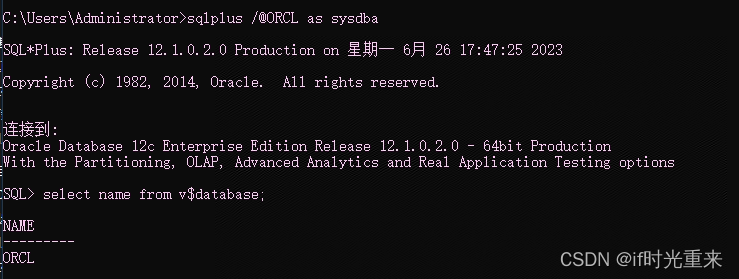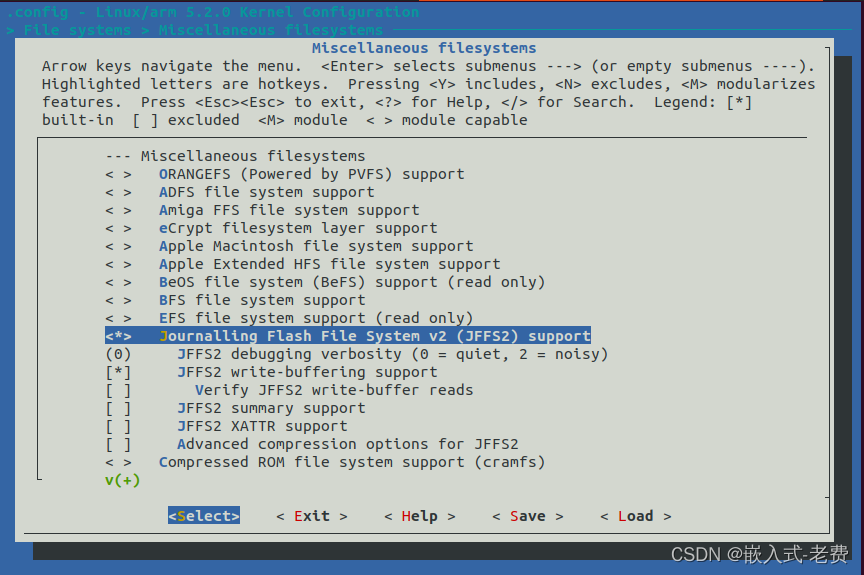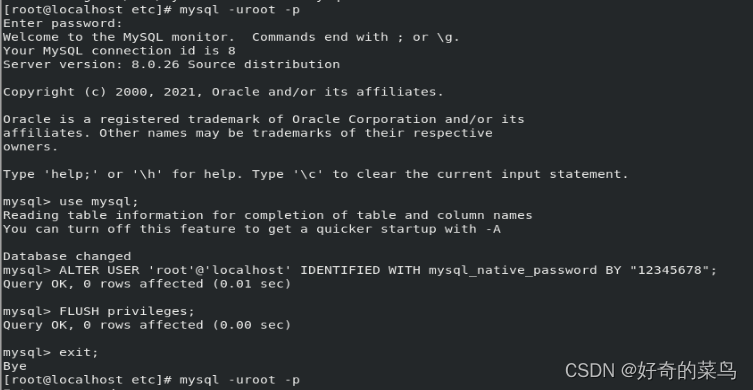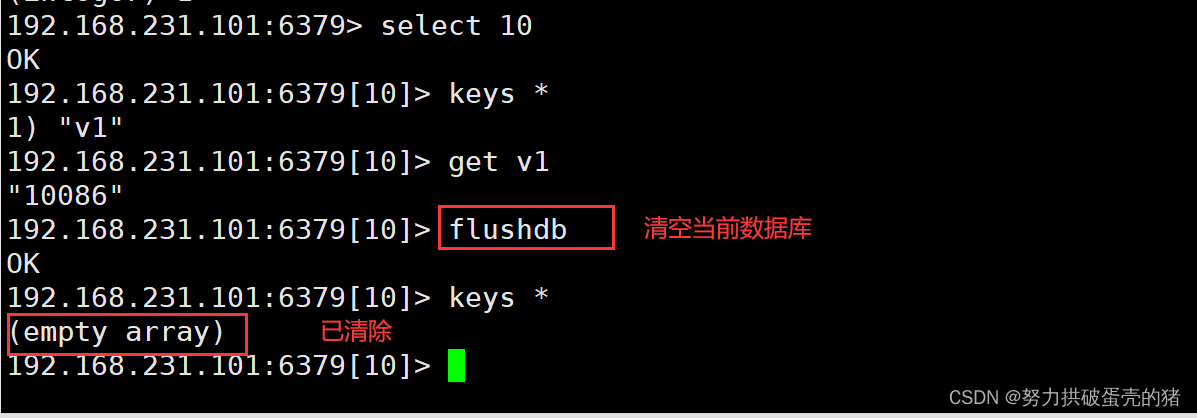参考了尚硅谷注解版,注解版后面的源码没看,雷神讲的太散了
Spring注解
AnnotationConfigApplicationContext
组件添加相关注解
1、@Configuration+@Bean (基础)
1-1 XML文件方式实现组件添加
public class Person {
private String name;
private Integer age;
private String nickName;
public String getNickName() {
return nickName;
}
public void setNickName(String nickName) {
this.nickName = nickName;
}
public String getName() {
return name;
}
public void setName(String name) {
this.name = name;
}
public Integer getAge() {
return age;
}
public void setAge(Integer age) {
this.age = age;
}
public Person(String name, Integer age) {
super();
this.name = name;
this.age = age;
}
public Person() {
super();
// TODO Auto-generated constructor stub
}
@Override
public String toString() {
return "Person [name=" + name + ", age=" + age + ", nickName=" + nickName + "]";
}
}
beans.xml-配置文件
<?xml version="1.0" encoding="UTF-8"?>
<beans xmlns="http://www.springframework.org/schema/beans"
xmlns:xsi="http://www.w3.org/2001/XMLSchema-instance"
xmlns:context="http://www.springframework.org/schema/context"
xmlns:aop="http://www.springframework.org/schema/aop"
xmlns:tx="http://www.springframework.org/schema/tx"
xsi:schemaLocation="http://www.springframework.org/schema/beans http://www.springframework.org/schema/beans/spring-beans.xsd
http://www.springframework.org/schema/context http://www.springframework.org/schema/context/spring-context-4.3.xsd
http://www.springframework.org/schema/aop http://www.springframework.org/schema/aop/spring-aop-4.3.xsd
http://www.springframework.org/schema/tx http://www.springframework.org/schema/tx/spring-tx-4.3.xsd">
//指明扫描那些路径下的bean到spring容器中
<context:component-scan base-package="com.atguigu" use-default-filters="false"></context:component-scan>
<bean id="person" class="com.atguigu.bean.Person">
<property name="age" value="18"></property>
<property name="name" value="zhangsan"></property>
</bean>
</beans>
MainTest
public class MainTest {
@SuppressWarnings("resource")
public static void main(String[] args) {
ApplicationContext applicationContext = new ClassPathXmlApplicationContext("beans.xml");
Person bean = (Person) applicationContext.getBean("person");
System.out.println(bean);
}
}
输出
Person [name=zhangsan, age=18, nickName=null]
1-2 注解方式
//配置类==配置文件
@Configuration //告诉Spring这是一个配置类
public class MainConfig {
//给容器中注册一个Bean;类型为返回值的类型,id默认是用方法名作为id(就是bean的名字),在这里就是person01
@Bean
public Person person01(){
return new Person("lisi", 20);
}
}
或者以下面的这种方式
//配置类==配置文件
@Configuration //告诉Spring这是一个配置类
public class MainConfig {
//这里bean的name就是person
@Bean("person")
public Person person01(){
return new Person("lisi", 20);
}
}
@ComponentScans(告诉spring把那些位置的类扫描到spring容器中)
//配置类==配置文件
@Configuration //告诉Spring这是一个配置类
@ComponentScans(
value = {
@ComponentScan(value="com.atguigu",includeFilters = {
/* @Filter(type=FilterType.ANNOTATION,classes={Controller.class}),
@Filter(type=FilterType.ASSIGNABLE_TYPE,classes={BookService.class}),*/
@Filter(type=FilterType.CUSTOM,classes={MyTypeFilter.class})
},useDefaultFilters = false)
}
)
//@ComponentScan value:指定要扫描的包
//excludeFilters = Filter[] :指定扫描的时候按照什么规则排除那些组件
//includeFilters = Filter[] :指定扫描的时候只需要包含哪些组件
//FilterType.ANNOTATION:按照注解
//FilterType.ASSIGNABLE_TYPE:按照给定的类型;
//FilterType.ASPECTJ:使用ASPECTJ表达式
//FilterType.REGEX:使用正则指定
//FilterType.CUSTOM:使用自定义规则
public class MainConfig {
//给容器中注册一个Bean;类型为返回值的类型,id默认是用方法名作为id
@Bean("person")
public Person person01(){
return new Person("lisi", 20);
}
}
自定义TypeFilter指定包扫描规则(结合上面ComponentScans value值看)
public class MyTypeFilter implements TypeFilter {
/**
* metadataReader:读取到的当前正在扫描的类的信息
* metadataReaderFactory:可以获取到其他任何类信息的
*/
@Override
public boolean match(MetadataReader metadataReader, MetadataReaderFactory metadataReaderFactory)
throws IOException {
//获取当前类注解的信息
AnnotationMetadata annotationMetadata = metadataReader.getAnnotationMetadata();
//获取当前正在扫描的类的类信息
ClassMetadata classMetadata = metadataReader.getClassMetadata();
//获取当前类资源(类的路径)
Resource resource = metadataReader.getResource();
String className = classMetadata.getClassName();
System.out.println("--->"+className);
if(className.contains("er")){
return true;
}
return false;
}
}
@Scope
@Configuration
public class MainConfig2 {
/**
* @see ConfigurableBeanFactory#SCOPE_PROTOTYPE 任何环境都可以使用
* @see ConfigurableBeanFactory#SCOPE_SINGLETON 任何环境都可以使用
* @see org.springframework.web.context.WebApplicationContext#SCOPE_REQUEST request 只能在web容器里用
* @see org.springframework.web.context.WebApplicationContext#SCOPE_SESSION sesssion 只能在web容器里用
*
* @Scope:调整作用域
* prototype:多实例的:ioc容器启动并不会去调用方法创建对象放在容器中。
* 每次获取的时候才会调用方法创建对象;
* singleton:单实例的(默认值):ioc容器启动会调用方法创建对象放到ioc容器中。
* 以后每次获取就是直接从容器(map.get())中拿,
* request:同一次请求创建一个实例
* session:同一个session创建一个实例
*
* 默认是单实例的
*
*/
@Scope("prototype")
@Lazy
@Bean("person")
public Person person(){
System.out.println("给容器中添加Person....");
return new Person("张三", 25);
}
}
@Lazy
@Configuration
public class MainConfig2 {
/**
*
* 懒加载:
* 单实例bean:默认在容器启动的时候创建对象;
* 懒加载:容器启动不创建对象。第一次使用(获取)Bean创建对象,并初始化;
*
*/
@Lazy
@Bean("person")
public Person person(){
System.out.println("给容器中添加Person....");
return new Person("张三", 25);
}
@Conditional(读源码必备-重点)
MainConfig2
//类中组件统一设置。满足当前条件,这个类中配置的所有bean注册才能生效;
@Conditional({WindowsCondition.class})
@Configuration
public class MainConfig2 {
/**
* @Conditional({Condition}) : 按照一定的条件进行判断,满足条件给容器中注册bean
*
* 如果系统是windows,给容器中注册("bill")
* 如果是linux系统,给容器中注册("linus")
*/
@Bean("bill")
public Person person01(){
return new Person("Bill Gates",62);
}
@Conditional(LinuxCondition.class)
@Bean("linus")
public Person person02(){
return new Person("linus", 48);
}
}

LinuxCondition
//判断是否linux系统
public class LinuxCondition implements Condition {
/**
* ConditionContext:判断条件能使用的上下文(环境)
* AnnotatedTypeMetadata:注释信息
*/
@Override
public boolean matches(ConditionContext context, AnnotatedTypeMetadata metadata) {
// TODO是否linux系统
//1、能获取到ioc使用的beanfactory
ConfigurableListableBeanFactory beanFactory = context.getBeanFactory();
//2、获取类加载器
ClassLoader classLoader = context.getClassLoader();
//3、获取当前环境信息
Environment environment = context.getEnvironment();
//4、获取到bean定义的注册类
BeanDefinitionRegistry registry = context.getRegistry();
String property = environment.getProperty("os.name");
//可以判断容器中的bean注册情况,也可以给容器中注册bean
boolean definition = registry.containsBeanDefinition("person");
if(property.contains("linux")){
return true;
}
return false;
}
WindowsCondition
//判断是否windows系统
public class WindowsCondition implements Condition {
@Override
public boolean matches(ConditionContext context, AnnotatedTypeMetadata metadata) {
Environment environment = context.getEnvironment();
String property = environment.getProperty("os.name");
if(property.contains("Windows")){
return true;
}
return false;
}
}
@Import 导入组件,id默认是组件的全类名
MainConfig2
@Configuration
@Import({Color.class,Red.class,MyImportSelector.class,MyImportBeanDefinitionRegistrar.class})
//@Import导入组件,id默认是组件的全类名
public class MainConfig2 {
/**
* 给容器中注册组件;
* 1)、包扫描+组件标注注解(@Controller/@Service/@Repository/@Component)[只能注册自己写的类]
* 2)、@Bean[导入的第三方包里面的组件]
* 3)、@Import[快速给容器中导入一个组件]
* 1)、@Import(要导入到容器中的组件);容器中就会自动注册这个组件,id默认是全类名
* 2)、ImportSelector:返回需要导入的组件的全类名数组;
* 3)、ImportBeanDefinitionRegistrar:手动注册bean到容器中
*/
@Bean
public ColorFactoryBean colorFactoryBean(){
return new ColorFactoryBean();
}
}
MyImportSelector
//自定义逻辑返回需要导入的组件
public class MyImportSelector implements ImportSelector {
//返回值,就是到导入到容器中的组件全类名
//AnnotationMetadata:@Import引入MyImportSelector的类的所有注解信息
@Override
public String[] selectImports(AnnotationMetadata importingClassMetadata) {
//importingClassMetadata.get
//方法不要返回null值,不然会报错
return new String[]{"com.atguigu.bean.Blue","com.atguigu.bean.Yellow"};
}
}
MyImportBeanDefinitionRegistrar
public class MyImportBeanDefinitionRegistrar implements ImportBeanDefinitionRegistrar {
/**
* AnnotationMetadata:当前类的注解信息
* BeanDefinitionRegistry:BeanDefinition注册类;
* 把所有需要添加到容器中的bean;调用
* BeanDefinitionRegistry.registerBeanDefinition手工注册进来
*/
@Override
public void registerBeanDefinitions(AnnotationMetadata importingClassMetadata, BeanDefinitionRegistry registry) {
boolean definition = registry.containsBeanDefinition("com.atguigu.bean.Red");
boolean definition2 = registry.containsBeanDefinition("com.atguigu.bean.Blue");
if(definition && definition2){
//指定Bean定义信息;(Bean的类型,Bean。。。)
RootBeanDefinition beanDefinition = new RootBeanDefinition(RainBow.class);
//注册一个Bean,指定bean名
registry.registerBeanDefinition("rainBow", beanDefinition);
}
}
}
public class Color {
private Car car;
public Car getCar() {
return car;
}
public void setCar(Car car) {
this.car = car;
}
@Override
public String toString() {
return "Color [car=" + car + "]";
}
}
public class Blue {
public Blue(){
System.out.println("blue...constructor");
}
public void init(){
System.out.println("blue...init...");
}
public void detory(){
System.out.println("blue...detory...");
}
}
FactoryBean
MainConfig2
@Configuration
public class MainConfig2 {
/**
* 给容器中注册组件;
* 1)、包扫描+组件标注注解(@Controller/@Service/@Repository/@Component)[自己写的类]
* 2)、@Bean[导入的第三方包里面的组件]
* 3)、@Import[快速给容器中导入一个组件]
* 1)、@Import(要导入到容器中的组件);容器中就会自动注册这个组件,id默认是全类名
* 2)、ImportSelector:返回需要导入的组件的全类名数组;
* 3)、ImportBeanDefinitionRegistrar:手动注册bean到容器中
* 4)、使用Spring提供的 FactoryBean(工厂Bean);
* 1)、默认获取到的是工厂bean调用getObject创建的对象
* 2)、要获取工厂Bean本身,我们需要给id前面加一个&
* &colorFactoryBean
*
* 虽然这里装配的是ColorFactoryBean,但实际上beand的类型是Color
*/
@Bean
public ColorFactoryBean colorFactoryBean(){
return new ColorFactoryBean();
}
}
ColorFactoryBean
//创建一个Spring定义的FactoryBean
public class ColorFactoryBean implements FactoryBean<Color> {
//返回一个Color对象,这个对象会添加到容器中
@Override
public Color getObject() throws Exception {
// TODO Auto-generated method stub
System.out.println("ColorFactoryBean...getObject...");
return new Color();
}
@Override
public Class<?> getObjectType() {
// TODO Auto-generated method stub
return Color.class;
}
//是单例?
//true:这个bean是单实例,在容器中保存一份
//false:多实例,每次获取都会创建一个新的bean;
@Override
public boolean isSingleton() {
// TODO Auto-generated method stub
return false;
}
}
IOCTest
public class IOCTest {
AnnotationConfigApplicationContext applicationContext = new AnnotationConfigApplicationContext(MainConfig2.class);
@Test
public void testImport(){
printBeans(applicationContext);
Blue bean = applicationContext.getBean(Blue.class);
System.out.println(bean);
//工厂Bean获取的是调用getObject创建的对象
Object bean2 = applicationContext.getBean("colorFactoryBean");
System.out.println("bean的类型:"+bean2.getClass()); //pos_1 输出:bean的类型:class com.atguigu.bean.Color
Object bean4 = applicationContext.getBean("&colorFactoryBean");
System.out.println(bean4.getClass()); //pos_2 输出:class com.atguigu.bean.ColorFactoryBean
}
private void printBeans(AnnotationConfigApplicationContext applicationContext){
String[] definitionNames = applicationContext.getBeanDefinitionNames();
for (String name : definitionNames) {
System.out.println(name);
}
}
}
输出:
//前面无关的输出省略
colorFactoryBean
ColorFactoryBean...getObject...
bean的类型:class com.atguigu.bean.Color
class com.atguigu.bean.ColorFactoryBean
生命周期(重点)
PS : 这个有点不容易理解,建议先记住,后期结合查看源码会更加清楚
@Bean指定初始化和销毁方法
- 1、指定初始化和销毁方法,通过@Bean指定init-method和destroy-method;
- 2、通过让Bean实现InitializingBean(定义初始化逻辑),DisposableBean(定义销毁逻辑);
IOCTest_LifeCycle
后面的几个用的都是这个测试类
public class IOCTest_LifeCycle {
@Test
public void test01(){
//1、创建ioc容器
AnnotationConfigApplicationContext applicationContext = new AnnotationConfigApplicationContext(MainConfigOfLifeCycle.class);
System.out.println("容器创建完成...");
//applicationContext.getBean("car");
//关闭容器
applicationContext.close();
}
}
MainConfigOfLifeCycle
这个类中的注释一定要仔细的看看,讲的非常好
重点在解释一下这句话:《bean的生命周期:bean创建—初始化----销毁的过程》,这个是spring给容器中加入bean时,整个创建完成一个bean的过程,首先是bean创建(其实就是new 一个bean,也就是实例化出来对象,注意这个时候,还没有给bean中的属性赋值),第二步是初始化(这个初始化的过程就是给刚才实例化出来的对象中的属性赋值,以及init方法的执行等),最后这个bean不被使用了,就会被销毁了,执行销毁的方法
package com.atguigu.config;
import org.springframework.context.ApplicationListener;
import org.springframework.context.annotation.Bean;
import org.springframework.context.annotation.ComponentScan;
import org.springframework.context.annotation.Configuration;
import org.springframework.context.annotation.Scope;
import com.atguigu.bean.Car;
/**
* bean的生命周期:
* bean创建---初始化----销毁的过程
* 容器管理bean的生命周期;
* 我们可以自定义初始化和销毁方法;容器在bean进行到当前生命周期的时候来调用我们自定义的初始化和销毁方法
*
* 构造(对象创建)
* 单实例:在容器启动的时候创建对象
* 多实例:在每次获取的时候创建对象
* 初始化:
* 对象创建完成,并赋值好,调用初始化方法。。。
* BeanPostProcessor.postProcessAfterInitialization
* 销毁:
* 单实例:容器关闭的时候
* 多实例:容器不会管理这个bean;容器不会调用销毁方法;
*
* 1)、指定初始化和销毁方法;
* 通过@Bean指定init-method和destroy-method;
* @author lfy
*
*/
@ComponentScan("com.atguigu.bean")
@Configuration
public class MainConfigOfLifeCycle {
//@Scope("prototype")
@Bean(initMethod="init",destroyMethod="detory")
public Car car(){
return new Car();
}
}
@Component
public class Car {
public Car(){
System.out.println("car constructor...");
}
public void init(){
System.out.println("car ... init...");
}
public void detory(){
System.out.println("car ... detory...");
}
}
输出
car constructor...
car ... init...
容器创建完成
car ... detory...
InitializingBean和DisposableBean
MainConfigOfLifeCycle
/**
* bean的生命周期:
* bean创建---初始化----销毁的过程
* 容器管理bean的生命周期;
* 我们可以自定义初始化和销毁方法;容器在bean进行到当前生命周期的时候来调用我们自定义的初始化和销毁方法
*
* 构造(对象创建)
* 单实例:在容器启动的时候创建对象
* 多实例:在每次获取的时候创建对象
*
* BeanPostProcessor.postProcessBeforeInitialization
* 初始化:
* 对象创建完成,并赋值好,调用初始化方法。。。
* BeanPostProcessor.postProcessAfterInitialization
* 销毁:
* 单实例:容器关闭的时候
* 多实例:容器不会管理这个bean;容器不会调用销毁方法;
*
*
* 遍历得到容器中所有的BeanPostProcessor;挨个执行beforeInitialization,
* 一但返回null,跳出for循环,不会执行后面的BeanPostProcessor.postProcessorsBeforeInitialization
*
* BeanPostProcessor原理
* populateBean(beanName, mbd, instanceWrapper);给bean进行属性赋值
* initializeBean
* {
* applyBeanPostProcessorsBeforeInitialization(wrappedBean, beanName);
* invokeInitMethods(beanName, wrappedBean, mbd);执行自定义初始化
* applyBeanPostProcessorsAfterInitialization(wrappedBean, beanName);
*}
*
*
*
* 1)、指定初始化和销毁方法;
* 通过@Bean指定init-method和destroy-method;
* 2)、通过让Bean实现InitializingBean(定义初始化逻辑),
* DisposableBean(定义销毁逻辑);
*
* @author lfy
*
*/
@ComponentScan("com.atguigu.bean")
@Configuration
public class MainConfigOfLifeCycle {
//@Scope("prototype")
@Bean(initMethod="init",destroyMethod="detory")
public Car car(){
return new Car();
}
}
Cat
@Component
public class Cat implements InitializingBean,DisposableBean {
public Cat(){
System.out.println("cat constructor...");
}
@Override
public void destroy() throws Exception {
// TODO Auto-generated method stub
System.out.println("cat...destroy...");
}
@Override
public void afterPropertiesSet() throws Exception {
// TODO Auto-generated method stub
System.out.println("cat...afterPropertiesSet...");
}
}
输出
cat constructor...
cat...afterPropertiesSet...
car constructor...
car ... init...
容器创建完成
car ... detory...
cat...destroy...
@PostConstruct和@PreDestroy
PostConstruct:可以理解为构造函数后,就是new bean之后
PreDestroy:可以理解为销毁前:就是销毁bean前
下面类中的注释看不懂没关系,因为那都是结合spring源码来说的,没有看过源码的,直接记住下面的描述就可以了
1)、指定初始化和销毁方法;
通过@Bean指定init-method和destroy-method;
2)、通过让Bean实现InitializingBean(定义初始化逻辑),
DisposableBean(定义销毁逻辑);
3)、可以使用JSR250;
@PostConstruct:在bean创建完成并且属性赋值完成;来执行初始化方法
@PreDestroy:在容器销毁bean之前通知我们进行清理工作
MainConfigOfLifeCycle
/**
* bean的生命周期:
* bean创建---初始化----销毁的过程
* 容器管理bean的生命周期;
* 我们可以自定义初始化和销毁方法;容器在bean进行到当前生命周期的时候来调用我们自定义的初始化和销毁方法
*
* 构造(对象创建)
* 单实例:在容器启动的时候创建对象
* 多实例:在每次获取的时候创建对象\
*
* BeanPostProcessor.postProcessBeforeInitialization
* 初始化:
* 对象创建完成,并赋值好,调用初始化方法。。。
* BeanPostProcessor.postProcessAfterInitialization
* 销毁:
* 单实例:容器关闭的时候
* 多实例:容器不会管理这个bean;容器不会调用销毁方法;
*
*
* 遍历得到容器中所有的BeanPostProcessor;挨个执行beforeInitialization,
* 一但返回null,跳出for循环,不会执行后面的BeanPostProcessor.postProcessorsBeforeInitialization
*
* BeanPostProcessor原理
* populateBean(beanName, mbd, instanceWrapper);给bean进行属性赋值
* initializeBean
* {
* applyBeanPostProcessorsBeforeInitialization(wrappedBean, beanName);
* invokeInitMethods(beanName, wrappedBean, mbd);执行自定义初始化
* applyBeanPostProcessorsAfterInitialization(wrappedBean, beanName);
*}
*
*
* 看不懂上面的不要紧,因为上面都是结合spring源码来写的,没有看过原来的就记住下面的描述就可以了
* 1)、指定初始化和销毁方法;
* 通过@Bean指定init-method和destroy-method;
* 2)、通过让Bean实现InitializingBean(定义初始化逻辑),
* DisposableBean(定义销毁逻辑);
* 3)、可以使用JSR250;
* @PostConstruct:在bean创建完成并且属性赋值完成;来执行初始化方法
* @PreDestroy:在容器销毁bean之前通知我们进行清理工作
*
* @author lfy
*
*/
@ComponentScan("com.atguigu.bean")
@Configuration
public class MainConfigOfLifeCycle {
//@Scope("prototype")
@Bean(initMethod="init",destroyMethod="detory")
public Car car(){
return new Car();
}
}
Dog
@Component
public class Dog implements ApplicationContextAware {
//@Autowired
private ApplicationContext applicationContext;
public Dog(){
System.out.println("dog constructor...");
}
//对象创建并赋值之后调用
@PostConstruct
public void init(){
System.out.println("Dog....@PostConstruct...");
}
//容器移除对象之前
@PreDestroy
public void detory(){
System.out.println("Dog....@PreDestroy...");
}
@Override
public void setApplicationContext(ApplicationContext applicationContext) throws BeansException {
// TODO Auto-generated method stub
this.applicationContext = applicationContext;
}
}
输出
cat constructor...
cat...afterPropertiesSet...
dog constructor...
Dog....@PostConstruct...
car constructor...
car ... init...
容器创建完成
car ... detory...
Dog....@PreDestroy...
cat...destroy...
BeanPostProcessor
/**
* bean的生命周期:
* bean创建---初始化----销毁的过程
* 容器管理bean的生命周期;
* 我们可以自定义初始化和销毁方法;容器在bean进行到当前生命周期的时候来调用我们自定义的初始化和销毁方法
*
* 构造(对象创建)
* 单实例:在容器启动的时候创建对象
* 多实例:在每次获取的时候创建对象\
*
* BeanPostProcessor.postProcessBeforeInitialization
* 初始化:
* 对象创建完成,并赋值好,调用初始化方法。。。
* BeanPostProcessor.postProcessAfterInitialization
* 销毁:
* 单实例:容器关闭的时候
* 多实例:容器不会管理这个bean;容器不会调用销毁方法;
*
*
* 遍历得到容器中所有的BeanPostProcessor;挨个执行beforeInitialization,
* 一但返回null,跳出for循环,不会执行后面的BeanPostProcessor.postProcessorsBeforeInitialization
*
* BeanPostProcessor原理
* populateBean(beanName, mbd, instanceWrapper);给bean进行属性赋值
* initializeBean
* {
* applyBeanPostProcessorsBeforeInitialization(wrappedBean, beanName);
* invokeInitMethods(beanName, wrappedBean, mbd);执行自定义初始化
* applyBeanPostProcessorsAfterInitialization(wrappedBean, beanName);
*}
*
*
*
* 1)、指定初始化和销毁方法;
* 通过@Bean指定init-method和destroy-method;
* 2)、通过让Bean实现InitializingBean(定义初始化逻辑),
* DisposableBean(定义销毁逻辑);
* 3)、可以使用JSR250;
* @PostConstruct:在bean创建完成并且属性赋值完成;来执行初始化方法
* @PreDestroy:在容器销毁bean之前通知我们进行清理工作
* 4)、BeanPostProcessor【interface】:bean的后置处理器;
* 在bean初始化前后进行一些处理工作;
* postProcessBeforeInitialization:在初始化之前工作
* postProcessAfterInitialization:在初始化之后工作
*
* Spring底层对 BeanPostProcessor 的使用;
* bean赋值,注入其他组件,@Autowired,生命周期注解功能,@Async,xxx BeanPostProcessor;
*
* @author lfy
*
*/
@ComponentScan("com.atguigu.bean")
@Configuration
public class MainConfigOfLifeCycle {
//@Scope("prototype")
@Bean(initMethod="init",destroyMethod="detory")
public Car car(){
return new Car();
}
}
MyBeanPostProcessor
/**
* 后置处理器:初始化前后进行处理工作
* 将后置处理器加入到容器中
* @author lfy
*/
@Component
public class MyBeanPostProcessor implements BeanPostProcessor {
@Override
public Object postProcessBeforeInitialization(Object bean, String beanName) throws BeansException {
// TODO Auto-generated method stub
System.out.println("postProcessBeforeInitialization..."+beanName+"=>"+bean);
return bean;
}
@Override
public Object postProcessAfterInitialization(Object bean, String beanName) throws BeansException {
// TODO Auto-generated method stub
System.out.println("postProcessAfterInitialization..."+beanName+"=>"+bean);
return bean;
}
}
输出
自己写的组件输出内容
car constructor...
postProcessBeforeInitialization...car=>com.atguigu.bean.Car@5ef60048
car ... init...
postProcessAfterInitialization...car=>com.atguigu.bean.Car@5ef60048
cat constructor...
postProcessBeforeInitialization...cat=>com.atguigu.bean.Cat@780cb77
cat...afterPropertiesSet...
postProcessAfterInitialization...cat=>com.atguigu.bean.Cat@780cb77
dog constructor...
postProcessBeforeInitialization...dog=>com.atguigu.bean.Dog@4034c28c
Dog....@PostConstruct...
postProcessAfterInitialization...dog=>com.atguigu.bean.Dog@4034c28c
容器创建完成...
Dog....@PreDestroy...
cat...destroy...
car ... detory...
- BeanPostProcessor在Spring源码里大量被使用到,仅凭这里雷丰阳老师讲的一点点原理,是无法体会的,建议自己去看看Spring源码。所以这里的原理部分我也就直接省略了,在本视频中讲的太浅了。
属性赋值
@Value和@PropertySource(重点)
Person
public class Person {
//使用@Value赋值;
//1、基本数值
//2、可以写SpEL; #{}
//3、可以写${};取出配置文件【properties】中的值(在运行环境变量里面的值)
@Value("张三")
private String name;
@Value("#{20-2}")
private Integer age;
@Value("${person.nickName}")
private String nickName;
public String getNickName() {
return nickName;
}
public void setNickName(String nickName) {
this.nickName = nickName;
}
public String getName() {
return name;
}
public void setName(String name) {
this.name = name;
}
public Integer getAge() {
return age;
}
public void setAge(Integer age) {
this.age = age;
}
public Person(String name, Integer age) {
super();
this.name = name;
this.age = age;
}
public Person() {
super();
// TODO Auto-generated constructor stub
}
@Override
public String toString() {
return "Person [name=" + name + ", age=" + age + ", nickName=" + nickName + "]";
}
}
person.properties
person.nickName=\u5C0F\u674E\u56DB
MainConfigOfPropertyValues
使用@PropertySource读取外部配置文件中的k/v保存到运行的环境变量中(以key/value) 的形式保存到spring容器中了
//使用@PropertySource读取外部配置文件中的k/v保存到运行的环境变量中;加载完外部的配置文件以后使用${}取出配置文件的值
@PropertySource(value={"classpath:/person.properties"})
@Configuration
public class MainConfigOfPropertyValues {
@Bean
public Person person(){
return new Person();
}
}
IOCTest_PropertyValue
public class IOCTest_PropertyValue {
AnnotationConfigApplicationContext applicationContext = new AnnotationConfigApplicationContext(MainConfigOfPropertyValues.class);
@Test
public void test01(){
printBeans(applicationContext);
System.out.println("=============");
Person person = (Person) applicationContext.getBean("person");
System.out.println(person);
ConfigurableEnvironment environment = applicationContext.getEnvironment();
String property = environment.getProperty("person.nickName");
System.out.println(property);
applicationContext.close();
}
private void printBeans(AnnotationConfigApplicationContext applicationContext){
String[] definitionNames = applicationContext.getBeanDefinitionNames();
for (String name : definitionNames) {
System.out.println(name);
}
}
}
输出
mainConfigOfPropertyValues
person
=============
Person [name=张三, age=18, nickName=小李四]
小李四
自动装配
@Autowired-@Qualifier-@Primary-@Resource-@Inject
@Controller
public class BookController {
@Autowired
private BookService bookService;
}
@Service
public class BookService {
//@Qualifier("bookDao")
//@Autowired(required=false)
//@Resource(name="bookDao2")
@Inject
private BookDao bookDao;
public void print(){
System.out.println(bookDao);
}
@Override
public String toString() {
return "BookService [bookDao=" + bookDao + "]";
}
}
//名字默认是类名首字母小写
@Repository
public class BookDao {
private String lable = "1";
public String getLable() {
return lable;
}
public void setLable(String lable) {
this.lable = lable;
}
@Override
public String toString() {
return "BookDao [lable=" + lable + "]";
}
}
MainConifgOfAutowired
/**
* 自动装配;
* Spring利用依赖注入(DI),完成对IOC容器中中各个组件的依赖关系赋值;
*
* 1)、@Autowired:自动注入:
* 1)、默认优先按照类型去容器中找对应的组件:applicationContext.getBean(BookDao.class);找到就赋值
* 2)、如果找到多个相同类型的组件,再将属性的名称作为组件的id去容器中查找
* applicationContext.getBean("bookDao")
* 3)、@Qualifier("bookDao"):使用@Qualifier指定需要装配的组件的id,而不是使用属性名
* 4)、自动装配默认一定要将属性赋值好,没有就会报错;
* 可以使用@Autowired(required=false);
* 5)、@Primary:让Spring进行自动装配的时候,默认使用首选的bean;
* 也可以继续使用@Qualifier指定需要装配的bean的名字
* BookService{
* @Autowired
* BookDao bookDao;
* }
*
* 2)、Spring还支持使用@Resource(JSR250)和@Inject(JSR330)[java规范的注解]
* @Resource:
* 可以和@Autowired一样实现自动装配功能;默认是按照组件名称进行装配的;
* 没有能支持@Primary功能没有支持@Autowired(reqiured=false);
* @Inject:
* 需要导入javax.inject的包,和Autowired的功能一样。没有required=false的功能;
* @Autowired:Spring定义的; @Resource、@Inject都是java规范
*
* AutowiredAnnotationBeanPostProcessor:解析完成自动装配功能;
*
* 3)、 @Autowired:构造器,参数,方法,属性;都是从容器中获取参数组件的值
* 1)、[标注在方法位置]:@Bean+方法参数;参数从容器中获取;默认不写@Autowired效果是一样的;都能自动装配
* 2)、[标在构造器上]:如果组件只有一个有参构造器,这个有参构造器的@Autowired可以省略,参数位置的组件还是可以自动从容器中获取
* 3)、放在参数位置:
public Boss(@Autowired Car car){
this.car = car;
System.out.println("Boss...有参构造器");
}
*
* 4)、自定义组件想要使用Spring容器底层的一些组件(ApplicationContext,BeanFactory,xxx);
* 自定义组件实现xxxAware;在创建对象的时候,会调用接口规定的方法注入相关组件;Aware;
* 把Spring底层一些组件注入到自定义的Bean中;
* xxxAware:功能使用xxxProcessor;
* ApplicationContextAware==》ApplicationContextAwareProcessor;
*
*
* @author lfy
*
*/
@Configuration
@ComponentScan({"com.atguigu.service","com.atguigu.dao",
"com.atguigu.controller","com.atguigu.bean"})
public class MainConifgOfAutowired {
@Primary
@Bean("bookDao2")
public BookDao bookDao(){
BookDao bookDao = new BookDao();
bookDao.setLable("2");
return bookDao;
}
/**
* @Bean标注的方法创建对象的时候,方法参数的值默认从容器中获取
* @param car
* @return
*/
@Bean
public Color color(Car car){
Color color = new Color();
color.setCar(car);
return color;
}
}
IOCTest_Autowired
public class IOCTest_Autowired {
@Test
public void test01(){
AnnotationConfigApplicationContext applicationContext = new AnnotationConfigApplicationContext(MainConifgOfAutowired.class);
BookService bookService = applicationContext.getBean(BookService.class);
System.out.println(bookService);
//BookDao bean = applicationContext.getBean(BookDao.class);
//System.out.println(bean);
Boss boss = applicationContext.getBean(Boss.class);
System.out.println(boss);
Car car = applicationContext.getBean(Car.class);
System.out.println(car);
Color color = applicationContext.getBean(Color.class);
System.out.println(color);
System.out.println(applicationContext);
applicationContext.close();
}
}
@Profle
MainConfigOfProfile
/**
* Profile:
* Spring为我们提供的可以根据当前环境,动态的激活和切换一系列组件的功能;
*
* 开发环境、测试环境、生产环境;
* 数据源:(/A)(/B)(/C);
*
*
* @Profile:指定组件在哪个环境的情况下才能被注册到容器中,不指定,任何环境下都能注册这个组件
*
* 1)、加了环境标识的bean,只有这个环境被激活的时候才能注册到容器中。默认是default环境
* 2)、写在配置类上,只有是指定的环境的时候,整个配置类里面的所有配置才能开始生效
* 3)、没有标注环境标识的bean在,任何环境下都是加载的;
*/
@PropertySource("classpath:/dbconfig.properties")
@Configuration
public class MainConfigOfProfile implements EmbeddedValueResolverAware{
@Value("${db.user}")
private String user;
private StringValueResolver valueResolver;
private String driverClass;
@Bean
public Yellow yellow(){
return new Yellow();
}
@Profile("test")
@Bean("testDataSource")
public DataSource dataSourceTest(@Value("${db.password}")String pwd) throws Exception{
ComboPooledDataSource dataSource = new ComboPooledDataSource();
dataSource.setUser(user);
dataSource.setPassword(pwd);
dataSource.setJdbcUrl("jdbc:mysql://localhost:3306/test");
dataSource.setDriverClass(driverClass);
return dataSource;
}
@Profile("dev")
@Bean("devDataSource")
public DataSource dataSourceDev(@Value("${db.password}")String pwd) throws Exception{
ComboPooledDataSource dataSource = new ComboPooledDataSource();
dataSource.setUser(user);
dataSource.setPassword(pwd);
dataSource.setJdbcUrl("jdbc:mysql://localhost:3306/ssm_crud");
dataSource.setDriverClass(driverClass);
return dataSource;
}
@Profile("prod")
@Bean("prodDataSource")
public DataSource dataSourceProd(@Value("${db.password}")String pwd) throws Exception{
ComboPooledDataSource dataSource = new ComboPooledDataSource();
dataSource.setUser(user);
dataSource.setPassword(pwd);
dataSource.setJdbcUrl("jdbc:mysql://localhost:3306/scw_0515");
dataSource.setDriverClass(driverClass);
return dataSource;
}
@Override
public void setEmbeddedValueResolver(StringValueResolver resolver) {
// TODO Auto-generated method stub
this.valueResolver = resolver;
driverClass = valueResolver.resolveStringValue("${db.driverClass}");
}
}
dbconfig.properties
db.user=root
db.password=123456
db.driverClass=com.mysql.jdbc.Driver



















